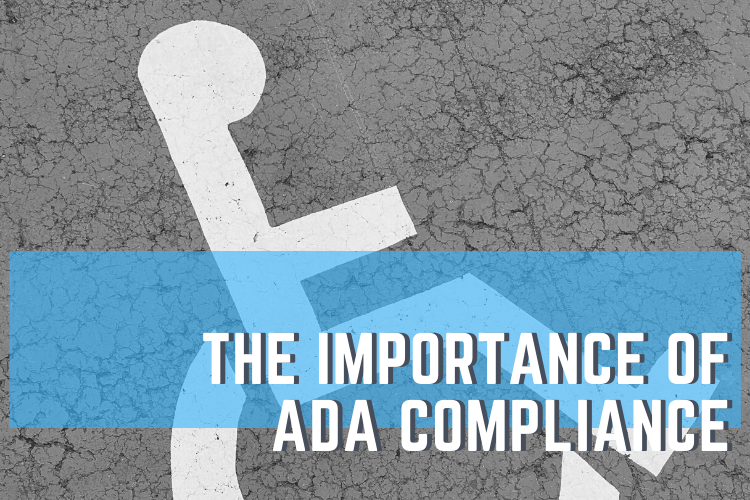If you own a business, you have probably heard of the Americans with Disabilities Act, or ADA for short. According to ada.gov, the ADA is “civil rights legislation that prohibits discrimination and guarantees that people with disabilities have the same opportunities as everyone else to participate in the mainstream of American life.” This is a strict liability law, which means there are no excuses for your business to be found non-compliant.

What Does ADA Have to Do with My Website?
Just as any business must be accessible to people with all kinds of disabilities, so must your website! If you have not made your website compliant with Title III of the ADA, it is possible that legal action will be taken against you. For those of you who clicked the link and promptly fell out of your chair, don’t fret! There are some basic actions you can take right now, and even showing you have taken steps towards being ADA compliant can help you to not be sued.
The most important thing is that your website communicates effectively to people of all abilities.
There is no quick fix; no simple tool or app can make your site compliant. However, if you take care of the following, you will be well on your way and also reduce your chance of being on someone’s litigation radar to begin with.
Simple Steps for Website ADA Compliance
- Does your headline effectively convey what the site page is about?
-
- Only use one H1 per page. If you are using an <h1> just to enlarge and color text, instead make it a <p> element and stylize with CSS.
- Make sure your headlines follow a hierarchy, for example, don’t use <h3> if it is not a subheading of an <h2>.
- Are you using descriptive anchor text?
-
- If your site uses clickable links such as “Click Here” please stop! Users should be able to tell where they’re going before clicking. Learn more about anchor text from Moz.
- Do you have an alt tag for every photo on the site?
-
- An alt tag is just a short description of the image that can be read by web crawlers and even text to speech programs.
-
- Example: <img src=”enthusiastic-pic.gif” alt=”a person winking and giving the thumbs up while reading a massive ADA document”>
- Do the videos on your site have closed captioning or subtitles?
-
- This one is easy – just upload your video to YouTube! Not only is YouTube a secure video player, but it provides subtitles automatically.
- Is your site easily readable, with enough contrast between the text and background?
-
- The contrast ratios can be found in the WCAG 2.0 (more on that later), but there are free contrast checker tools online for much easier use.
- Can you navigate your site completely using only a keyboard?
-
- Make sure users navigating your website can not get stuck in a loop and that all clickable elements are accessible using a keyboard.
Getting in the Weeds with WCAG 2.0
To dive into the finer details, ADA Title III cases often refer to Web Content Accessibility Guidelines (WCAG) 2.0, which has 38 criteria. There are three levels, A, AA, and AAA in order of importance, and typically your site needs to be compliant at the A and AA level. The purpose of the WCAG is to “make content accessible to a wider range of people with disabilities, including blindness and low vision, deafness and hearing loss, learning disabilities, cognitive limitations, limited movement, speech disabilities, photosensitivity and combinations of these.”
Remember the Basic Point of ADA Compliance
Before stressing about sifting through legal and technical tomes, just remember you have only one question to answer: Is my website easily usable and accessible for all visitors, including those with disabilities? If it is not following ADA compliance, take the easy steps to correct this now, and you may never have to worry about the more difficult ones.
This is not legal advice and ChoiceLocal is not liable for how any entity implements or does not implement the content on this web page. It is always best to seek legal counsel on such matters.
About the Author
Ryan Voorhees is a Digital Marketing Specialist at ChoiceLocal and has been on the team for over two years now. He enjoys spending way much time on the internet, discovering new music, playing card games and computer games, and getting more familiar with coding.


